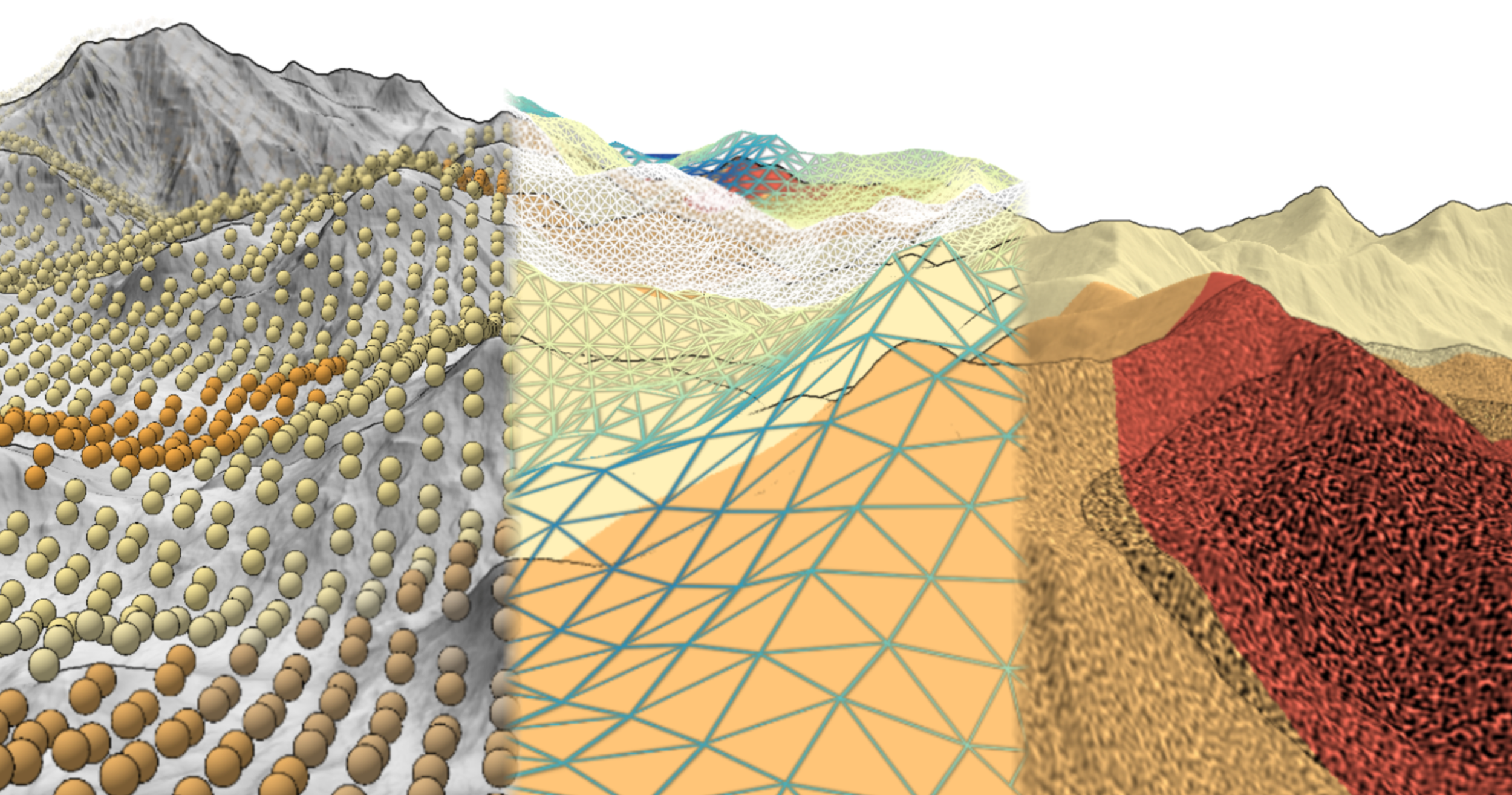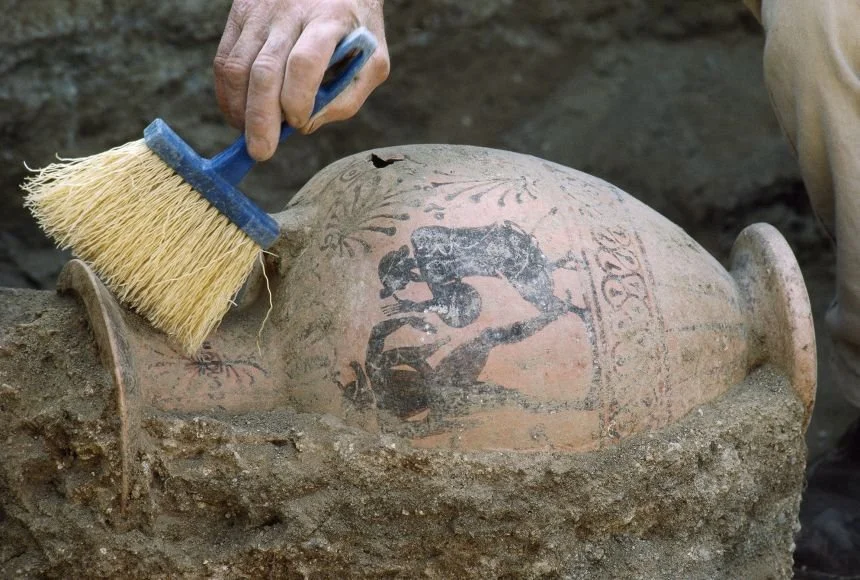The Zero-Sum Aura: Why Digital Immortality Requires a Material Host
The pursuit of digital immortality represents a contemporary philosophical ambition, attempting to achieve endless experience and continuity through non-material means. However, a critical examination reveals that this ambition is ontologically compromised, operating under a fundamental deficit that necessitates a radical return to the material. The enduring value of an object, or its aura, is not merely attenuated in the digital age; it is driven to a zero-sum condition, where any gain in reproducibility is met with a corresponding, systemic loss in singularity.
The Erosion of Cult Value: From Mechanical Reproduction to Pure Simulacrum
The foundational critique of the object’s declining value begins with Walter Benjamin’s analysis of mechanical reproduction. Benjamin observed that technological growth and the techniques it produced brought profound changes to the nature of the beautiful. The core loss was identified as the aura of the work of art. Mechanical reproduction detaches the object from the traditional domain by substituting a plurality of copies for a unique existence. The consequence of this symptomatic process points beyond the realm of art, challenging the inherent value structure of any reproducible artifact.
The intrinsic value of the object—its historical aura—is rooted in its singular material timeline. As evidenced by the deep, physical texture of the paint, this material presence cannot be captured or replicated, confirming the foundational loss identified in the age of mechanical reproduction. Understand how this erosion accelerates in the digital sphere in the full study.
Crucially, the erosion witnessed during the age of mechanical reproduction has been accelerated and rendered terminal in the digital sphere. While High Fidelity digital records—a mandate of the Post-Luxury Conceptual Functional Art (PLCFA) framework—might theoretically preserve the aesthetic experience of the art (the art aura), the pervasive nature of digital duplication fundamentally annihilates the historical aura, which is defined by a non-reproducible, singular material timeline. This bifurcation confirms the intrinsic ontological deficiency of any purely digital record.
The progression of reproducibility drives the image toward the total abstraction described by Jean Baudrillard. In Simulations, Baudrillard charted four successive phases in the breakdown of the image's relationship to reality. Digital technology quickly pushes objects past the first stages into the catastrophic phases of simulation. The ultimate destination of frictionless digital reproduction is Stage 4: the Pure Simulacrum. At this stage, the image bears no relation to any reality whatever; it is its own self-referential sign, a final crisis mapped in From the Aura to the Simulacrum.
The digital landscape, rendered in layers of abstraction from point clouds to wireframes, visualizes the journey toward the Pure Simulacrum. Here, the simulated object bears no inherent relation to reality, creating a Zero-Sum Aura where reproducibility annihilates singularity. Dive deeper into the ontological challenges of digital immortality in the full study.
This state, characterized by total ontological detachment, defines the Zero-Sum Aura. This concept describes the condition of a digital image or artifact—particularly one that is either infinitely reproduced or lacks a singular origin entirely—whose intrinsic worth approaches zero. Regardless of any temporary market valuation or visibility, the Zero-Sum Aura signifies a foundational ontological hollowness.
Circulationism, The Poor Image, and the Devaluation Mandate
The mechanism that enforces the Zero-Sum Aura is the logic of network distribution. Hito Steyerl identified this systematic pressure as Circulationism, an ideology in which value is measured not by quality or contemplation but by speed and distribution. Circulationism aligns the visual image with the logic and "flights of global capital," in which images accelerate even as they degrade.
The consequence of this system is the Poor Image: a low-resolution, degraded file that sacrifices fidelity for fungibility. This systemic erosion is not accidental; it is the necessary cost of conforming to the Circulationist model, demonstrating that digital entropy is woven into the very fabric of mass distribution. This crisis is the specific focus of Hito Steyerl and the Phygital Counter-Strategy study.
Even the iconic Mona Lisa is not immune to the forces of Circulationism. This "Poor Image"—degraded, pixelated, and easily shareable—illustrates how digital distribution prioritizes fungibility and speed over aesthetic fidelity, leading to a systemic devaluation of the original's aura. Explore how the PLCFA framework counters this devaluation in the full study.
The PLCFA framework responds to this systemic condition with the Phygital Counter-Strategy, a direct structural refutation of Circulationism. This counter-strategy is built upon the mandate of Anti-Virality, which constitutes an explicit refusal to participate in the frictionless mass circulation that defines the Poor Image economy. If the market demands velocity and global distribution, then resisting that velocity becomes the primary defense of aesthetic and material integrity. The PLCFA artifact is conceived as a rebellious singularity that deliberately limits its visibility to maintain its inalienable worth. This aesthetic and ethical restraint—a non-proliferation protocol for the image—prevents its abstraction into a disposable commodity sign, ensuring that the singular material event remains sovereign over the digital flow.
Digital Entropy, Link Rot, and the Myth of Virtual Persistence
The ideological promise of digital immortality, which suggests that human experience can be preserved and transmitted through durable, non-material media, is critically undermined by the empirical reality of digital decay. The very nature of digital information dictates that persistence is not a passive quality of storage but an active, continuous, and resource-intensive burden.
The Fragility of Digital Memory: Data Decay and Format Obsolescence
Contrary to popular assumption, digital information is more fragile than is sometimes assumed. Unlike matter, which passively endures through inertia, digital records require constant, active stewardship, including continuous organization, hardware updates, and management of changing file formats. This demand for sustained resource allocation makes digital persistence maximally vulnerable to economic and technological shifts.
The manifestations of this inherent instability are widespread in archival practice: Technological Obsolescence, Data Decay, and Link Rot. This vulnerability is acutely felt when valuable knowledge, often supported by time-limited funding, vanishes entirely once the upkeep ceases. Digital decay is not a random occurrence but a structural necessity rooted in evolving platform economies and technological advancement. Digital life is conditionally dependent on resource continuity, rendering it ephemeral compared to the passive, observable endurance of material forms.
Digital entropy in action: The left pane shows how technological obsolescence and neglect quickly lead to the death of digital records, which require continuous Active Stewardship. The right pane, featuring the passive endurance of stone and aged paper, affirms the longevity provided only by the Persistent Material Host. See why persistence is a resource-intensive burden in the full study.
The Fictionality of Non-Material Provenance
The notion of achieving permanent value through purely digital assets, such as NFTs, faces an ontological challenge. While these systems provide a robust, verifiable chain of ownership, this mechanism primarily tracks the history of a sign. This sign is intrinsically susceptible to the underlying reality of media degradation and format obsolescence. The blockchain records who possessed the data, but it offers no guarantee of the data's ongoing accessibility or functional usability decades into the future.
The rise of generative AI art further illuminates the instability of value in purely digital creation. When AI systems can produce "highly realistic and original images" rapidly and cheaply, the digital market becomes oversaturated. This abundance directly causes the value of purely digital, non-scarce assets to plummet. This dynamic highlights a critical axiom: the enduring structure of value requires a singular, non-deducible origin.
The Material Host asserts itself as the First Principle (Axiom) of creation. In formal logic, a first principle is an axiom that cannot be deduced from any other statement within that system. The material body provides the un-deducible, singular physical event necessary to underwrite the scarcity demanded by enduring value. The ambition for Digital Immortality without this material anchor is predicated on ontological fraud, promising endless experience for an artifact whose media foundation is guaranteed to succumb to entropic decay.
Structural Comparison: Digital Ephemera vs. Material Host
A two-by-three grid diagram comparing the ontological and persistence factors of Digital Ephemera and the Persistent Material Host, detailing the contrasts between Active Stewardship and Passive Inertia, Derivative Simulacrum and First Principle, and High Thanatopolitics and Low Thanatopolitics.
The decisive factor separating true longevity from fleeting existence lies in the mechanism of survival. The digital record, which we define as The Ephemeral, operates in a state of constant fragility: its persistence is a labor of Active Stewardship, requiring continuous resource input and technical migration, making it highly susceptible to Link Rot, Format Obsolescence, and Data Decay. This digital entity is ontologically suspect, functioning merely as a Derivative Simulacrum whose temporary value is tied to Fungibility and Velocity within Circulationism. Critically, it exhibits High Thanatopolitics Vulnerability, facing administrative death when the economic resources for its upkeep run out. In stark contrast, the physical object, the Persistent Material Host, achieves longevity through Passive Inertia, drawing on its inherent noumenal existence. Its existence is anchored as the First Principle—the non-deducible Axiom of Identity—securing its enduring value in the Singular Irreducible Trace that defines Material as Story. Because the Host resists passive neglect, its Thanatopolitics Vulnerability is Low, confirming that genuine endurance is solely a function of the sovereign material body, not the ephemeral digital sign.
The Biopolitical Challenge: Institutional Erasure and the Archival Death Mandate
The necessity of the Material Host is not solely a defense against technological entropy, but a structural defense against the centralized power of cultural administration, specifically the institutional mandate for oblivion. This defense requires the explicit synthesis of the frameworks developed by Michel Foucault and Boris Groys.
Documenting the Path of Synthesis: Foucault, Groys, and the Archival Gaze
The structural vulnerability of the artifact to institutional control is articulated through Foucault’s concept of Biopower. The power to manage life necessarily encompasses its deadly inverse: Thanatopolitics, defined as the power to authorize death. In cultural administration, this manifests not as overt destruction, but as economic obsolescence and calculated neglect, which is the institutional death mandate defined in Biopolitics of the Artifact. Digital records, requiring constant upkeep, are acutely susceptible to this biopolitical judgment, leading to their administrative death when budgets shift or grants expire.
This biopolitical death mandate converges with Groys' critique of the archive. Groys identifies two distinct yet equally effective mechanisms of contextual erasure. The traditional museum or archive exerts control through selection, while the Internet achieves oblivion through saturation and fragmentation. The synthesis of Foucault and Groys documents the dual threat to the artifact: the political death of exclusion and the entropic death of saturation. Both structural mandates aim for the object’s oblivion. The material host, therefore, is required to break this dependency on institutional Biopower and resist contextual erasure by asserting a non-negotiable biographical record.
Reversing the Panopticon: The Irreversible Gaze
The strategic response to archival Thanatopolitics within the PLCFA framework is the establishment of the Irreversible Gaze. This is the technological defense for the Material as Story principle.
The Irreversible Gaze is the self-registering biographical record enforced by the Custodian’s Contract. By securely registering every critical instance of the object's functional life—repairs, condition reports, ownership transfers, and uses—the system establishes a permanent, traceable provenance. This robust, data-rich record is engineered to resist the institution’s traditional power to manipulate selective memory or define historical truth.
This mechanism effectively reverses the Panopticon effect. Instead of the institution observing and managing the object’s life to assess its efficiency (Biopower), the object’s documented life monitors the institution’s stewardship. The object's persistence record shifts the relationship, transforming the Custodian from a sovereign monitor into a subject of the artifact’s biographical history. By enforcing transparency, the PLCFA framework strategically uses the need to maintain reputation to mandate the active preservation of the high-fidelity digital record. The Irreversible Gaze thus ensures the object's digital permanence by making its neglect an irrecoverable public liability for the custodian.
The Ontological Mandate: Materialism, Trace, and the Defense of Singularity
The ultimate defense of the Material Host rests upon a metaphysical foundation that rejects the anthropocentric biases inherent in digital valuation. This foundation is supplied by Object-Oriented Ontology (OOO) and related New Materialist critiques.
Beyond Correlationism: The Noumenal Existence of the Object
Object-Oriented Ontology (OOO), a 21st-century school of thought, fundamentally rejects the privileging of human existence and perception over the existence of nonhuman objects. This position directly opposes correlationism, the post-Kantian tendency to reduce philosophical inquiry to the relationship between thought and being.
OOO asserts a radical realism: the Material Host exists independently as a Kantian noumenon. The object is not ontologically exhausted by its relations with humans or other objects. This independent existence ensures that the object possesses an intrinsic, non-relational value. Digital valuation systems, such as Circulationism, are inherently correlationist, defining worth subjectively by impression, velocity, and affect. The Material Host, anchored in OOO, asserts a durability that resists this ephemeral, subjective digital metric. This position is the philosophical root of the Moral Weight per Material (MWPM) metric, which quantifies intrinsic worth outside of market consensus, as detailed in The Material as Political Capital.
The Material Host asserts itself as the First Principle. This ancient artifact, patiently enduring for millennia, embodies the noumenal existence defined by Object-Oriented Ontology, proving that enduring value requires a singular, non-deducible material origin. The ambition for digital immortality is predicated on this material anchor, as detailed in the full study.
Material as Story: The Irreducible Trace
The materialist defense finds its practical articulation in the principle of Material as Story. The Material Host functions as the First Principle or Axiom. The digital record is always a derivative deduction, whereas the material body, due to its noumenal existence (OOO), remains the unassailable originating axiom.
The Material as Story principle asserts that the artifact’s physical body carries its own biographical trace: the accumulated knowledge embedded within its material. This includes the history of its functional life, its use, its wear, and its repairs, which are physical events that cannot be fully abstracted into pure, standardized data sets.
The High Fidelity mandate of the Phygital Counter-Strategy directly defends this irreducible trace. The PLCFA framework insists that the archival data accurately capture the object's full texture and complexity, documenting its condition. By enforcing this epistemological rigor, the PLCFA framework ensures that the digital record remains permanently tethered to the singularity of the physical object’s ongoing existence.
The Phygital Counter-Strategy and the Sovereignty of the Material Host
The failure of purely digital systems to achieve enduring persistence—due to entropic decay and biopolitical mandates for erasure—necessitates the material tether. The PLCFA framework’s Phygital Counter-Strategy provides the systematic architecture for achieving post-luxury permanence.
Structuring Permanence: The Phygital Counter-Strategy Defined
The Phygital Counter-Strategy is the definitive response to the digital crisis of value degradation. It systematically manages the object’s essential dual existence: as a unique physical entity and as a controlled, high-fidelity digital record. This strategy acknowledges that digital persistence (immortality) is a highly vulnerable, active state, achievable only through the structural stability and passive endurance provided by the material body.
The objective existence of the Material Host (OOO) provides the ultimate defense against ephemeral digital metrics. The physical body functions as the permanent, passive repository of the historical aura, while the active digital record serves as the public-facing biographical proof of the Material as Story. This arrangement ensures that the material event maintains its status as the singular, unassailable referent against the forces of digital abstraction.
Anti-Virality and the Ethical Calculus of Scarcity
Central to the sovereignty of the Material Host is the enforcement of ethical restraint in distribution. The High Fidelity digital record functions as an immutable, epistemological extension, deliberately avoiding the schema of the Poor Image and maintaining its conceptual link to material singularity.
However, fidelity alone is insufficient; the record must be protected from Circulationism. The Anti-Virality protocol, legally enforced by the Custodian’s Contract, mandates a deliberately restricted distribution. This restriction is necessary because the pursuit of visibility and mass exposure (virality) is structurally antithetical to the preservation of singular worth. This establishes an ethical calculus: Post-Luxury permanence requires resisting the market pressure for endless visibility. Anti-Virality prioritizes durability and ontological scarcity over immediate, ephemeral gains from global circulation, thus positioning the artifact as a genuine "rebellious singularity" in the sign-value system.
Conclusion: Reclaiming the Aura Through Material Anchoring
This study has established that the pursuit of purely digital immortality results in a Zero-Sum Aura, destined for entropic collapse and biopolitical oblivion. The inherent ontological instability of the digital sign, traced from Benjamin’s concept of the withering aura through Baudrillard’s Stage 4 Pure Simulacrum, demonstrates that non-material persistence is conditional, volatile, and requires continuous, costly maintenance.
Enduring, inalienable value and provenance demand a Material Host that serves as the noumenal, non-deducible referent (First Principle/OOO). The PLCFA framework successfully mediates this existential crisis through the Phygital Counter-Strategy, which synthesizes the critique of Foucault’s Thanatopolitics and Groys’ archival mandate with the defense of materialist ontology. By converting the fragile digital trace into an Irreversible Gaze—securely documenting the object's life and enforcing Anti-Virality—the framework ensures that the rigor of matter eternally hosts the digital record. Digital immortality, therefore, is not a victory of information over matter, but a conditional achievement dependent entirely upon the sovereignty and permanence of its material anchor.








